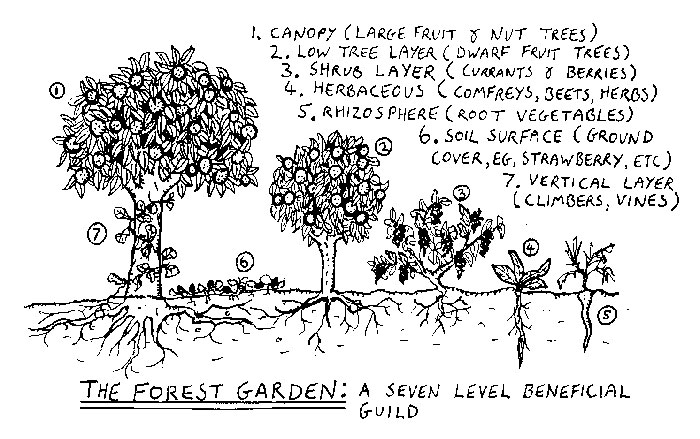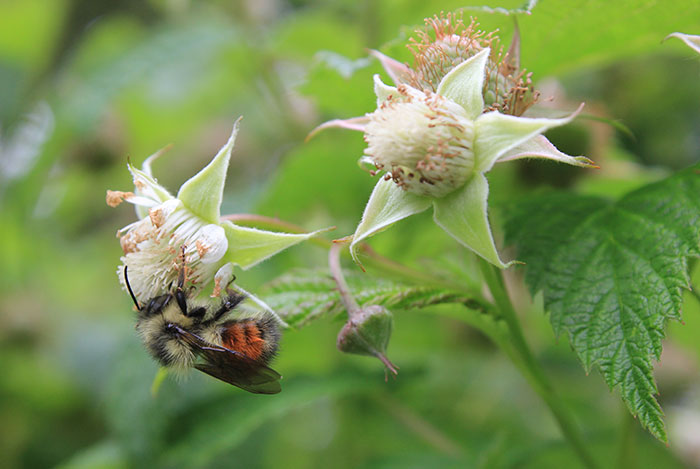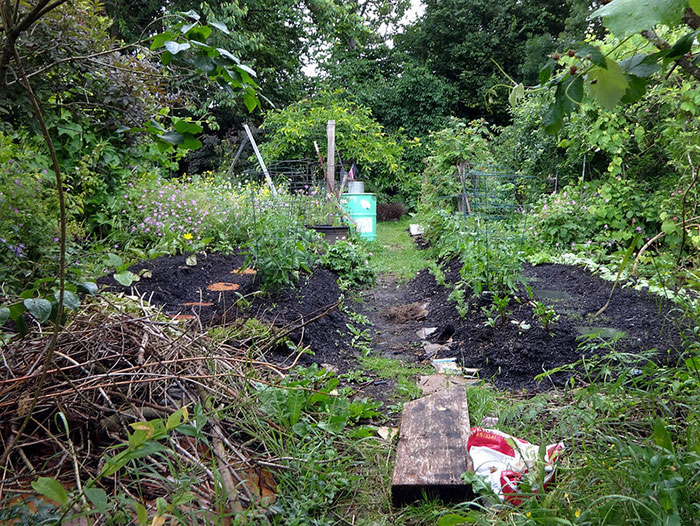Food Forest Gardening: 5 reasons to give it a try
Instead of fighting a constant battle with Mother Nature in our food gardens, why not follow her lead? After all, natural forests have been happily providing for animals and humans for millennia. If we gardeners took a break from weeding and paid attention to how natural ecosystems work, we just might learn something.
Robert Hart coined the term "Forest Gardening" in the 1980s. Searching for a new way to garden, he was inspired by farmers in tropical climates who grew multiple kinds of food, fiber, and medicine in densely layered ecosystems. Hart adapted these techniques to his own temperate climate, and a new gardening movement was born.
So what might it look like to bring the food forest concept to your own garden? Whether you're a seasoned gardener or just getting started, and no matter the size of your garden space, the basic principles of food forest gardening have something to offer everyone. Here are five reasons to give food forests a try.
1. They work on almost any scale
Robert Hart's original food forest was hardly gigantic at about 5000 square feet (0.12 acres). The concept has been adapted to much larger areas, and it can easily be adapted to smaller backyard spaces as well.
By making use of vertical space, food forest gardening can help you get the most out of a small garden. Trees and vines make use of vertical space above ground, while root crops ensure that the garden's productivity extends below the soil. By layering trees, shrubs, herbaceous plants, groundcovers, and root-crops, food forest gardeners multiply the harvest from the same horizontal space.
Food forests are going to look different depending on the garden space you're working with and your own personal style. Pick and choose the concepts that work for you, and experiment to see what's best for your space.

2. They're (mostly) self-sustaining
While some gardeners love to plan and maintain their gardens, a lot of us just want to grow our own food without too much fuss. Food forests are perfect for "lazivores" because they're designed to be relatively self-sustaining ecosystems.
The vegetables we're used to seeing in traditional gardens -- from lettuce to tomatoes -- tend to be annuals, which means that they need to be replanted every year. There's nothing wrong with that as long as gardeners take care to replenish their soils, but it does take a lot of work.
In contrast, food forest gardens are centered around perennials: sturdy, long-lived plants that can more or less take care of themselves. These include fruit and nut trees, herbs like rosemary and sage, perennial vegetables like rhubarb and artichokes, and berry bushes that produce fruit year after year.
Although small-scale food forests still require occasional pruning, feeding, and basic care, they are generally much lower-maintenance than traditional vegetable beds.
3. They're forgiving
The whole idea behind food forest gardening is to work with your existing landscape, rather than against it. This may require a little flexibility on your part. But on the positive side, all sorts of landscapes can become vibrant food forests.
Take another look at your "problem" spaces, such as those shaded by an existing canopy, and try to see them as opportunities to try something new.
Many native edible plants are more adaptable than typical vegetables and provide countless benefits to local wildlife. Some food forest gardeners also take pride in cultivating edible mushrooms in the damp shade of their forest floors.
4. Your local wildlife will love you
Food forests are ecosystems, and that means they make excellent habitats for animals as well as plants. This is a mind-set shift for some gardeners, who may be used to battling insects and rodents.
In contrast, many food forest gardeners include plants specifically to provide food and shelter for garden critters. Although this may mean rolling out the carpet to garden pests, beneficial animals will thrive as well. Successful food forests are all about maintaining a healthy balance.

5. Your soil life will love you too
Soil is an amazing ecosystem in its own right. When you start with the soil, the whole garden will thrive. Food forests are ideal habitats for soil life because they leave the soil undisturbed.
Building soil is gradual, deliberate work, and the organisms who live in our soils don't like to be interrupted. Every time a vegetable bed is tilled or turned over, the microbes, worms, and other soil life have to start their work all over again. I can almost imagine them throwing up their proverbial hands.
Instead of tilling, food forest gardeners usually build up their soil with mulch. Mulching with organic matter imitates yearly deposits of leaves and other debris in the wild. In established food forests, the gardener might simply leave this work to the trees
Ready to give it a try?
Perhaps the greatest thing about food forest gardening is that it's so adaptable. Even if not all of this sounds like like your style, it couldn't hurt to glean a few ideas to use in your more conventional or smaller-scale garden. Maybe you'll try planting a few flowering herbs around your potted fruit tree, or just creating a mini refuge for local pollinators in a small container. No matter what approach you choose, I hope these ideas might provide some inspiration.

